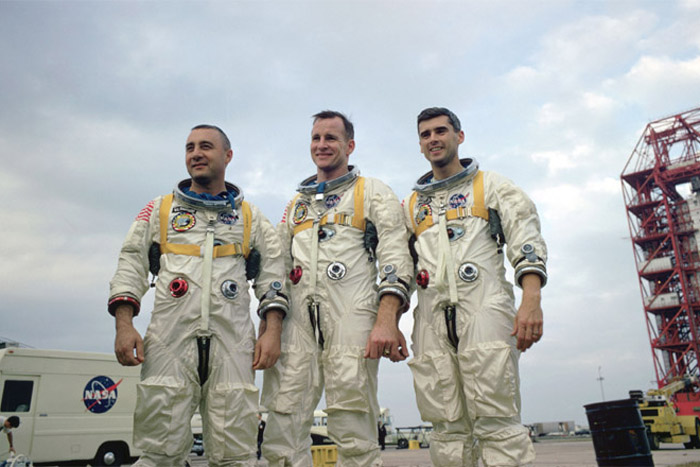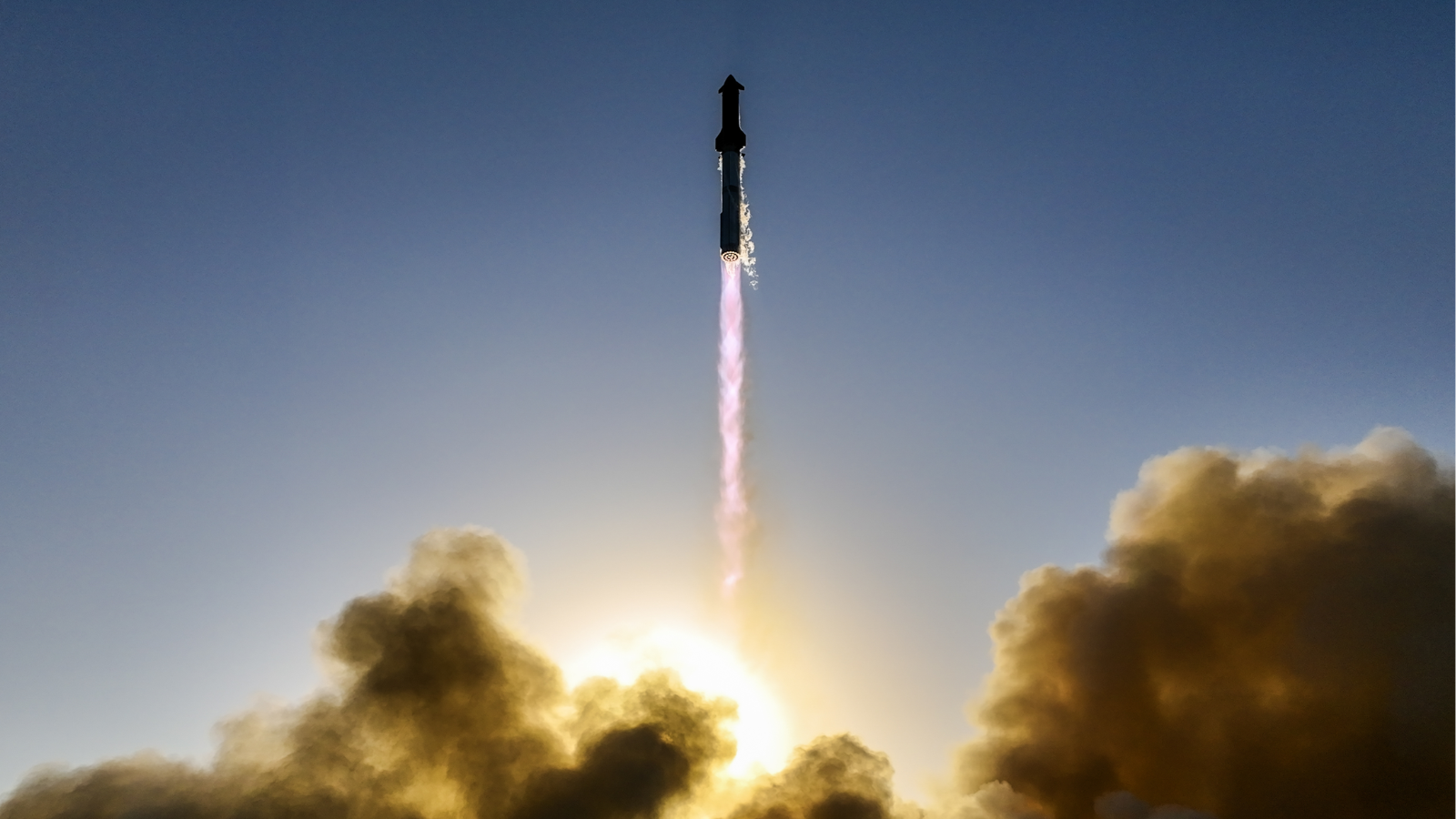NASA's First Disaster Happened on the Launch Pad

This article was originally published in 2013.
In NASA's early years, the agency learned by doing; developing tests and procedures as programs wore on. One test developed and used in the Mercury program was the "plugs-out test," a prelaunch test of the spacecrafts systems through a simulated countdown on launch. It was never considered a dangerous test, but on Jan. 27, 1967, Apollo 1's plugs-out test claimed the lives of the crew.
Typical for the first flight of a new program, the plan for Apollo 1 was a simple shakedown cruise. The crew — Mercury astronaut Gus Grissom, Gemini veteran Ed White, and rookie Roger Chaffee — would take just the Command and Service Module (CSM) into Earth orbit.
PHOTOS: 'Lost' NASA Photos Catch Apollo Teams in Training
The plugs-out test started out routinely with the flight-ready spacecraft mounted on its unfueled Saturn IB rocket. The umbilical power cords that supplied power were removed — the plugs were out — putting the spacecraft on its internal batteries and the crew cabin was pressurized with 16.7 pounds per square inch of pure oxygen. As the crew entered the spacecraft around 1pm that afternoon, a full launch-day staff of engineers in mission control took their positions for the test. There was also a staff of men in the White Room; the room that gave the astronauts passage to the spacecraft remained attached to the vehicle.
For the first five hours, minor things interrupted the test. Grissom complained of a foul odor like sour buttermilk in his oxygen unit and at one point a high oxygen flow rate in the astronauts suits tripped an alarm. But these were minor problems compared to the persistent communications problems. Static made conversations between the crew and mission control nearly impossible. Grissom, frustration rising, remarked that they'd never get to the moon if they couldn't talk between two or three buildings.
Just after 6:31pm that evening, technicians monitoring the spacecraft from Mission Control noticed a sudden increase in oxygen flow and pressure inside the cabin. This irregularity in telemetry was accompanied by a garbled transmission: "Fire," someone said, then "they're fighting a bad fire — let's get out. Open 'er up" or "we've got a bad fire — let's get out. We're burning up." Because of the static, it wasn't even clear who was speaking.
Get the Space.com Newsletter
Breaking space news, the latest updates on rocket launches, skywatching events and more!
ANALYSIS: Book Shows Rare Snapshots from NASA's Early Days
Monitors showing a live video feed of the white room told the story: flames visible through in spacecraft's small window. Crews in the White Room tried to open the hatch, but no one could move the inward opening design against the pressure inside the spacecraft. Three seconds after the crew's first mention of a fire, the CSM's pressure reached a critical point. The hull ruptured, flames poured into the White Room. Telemetry and voice communication from Apollo 1 went silent.
It was a half hour before firemen and recovery personnel were able to remove the astronauts' bodies; Ed White was found turned around on his couch reaching for the hatch.
The accident investigation lasted a year. It took two months for technicians to disassemble the spacecraft; it was taken apart piece by piece with everything removed checked against another full Apollo CSM. The accident review board finally determined that a wire over the piping from the urine collection system had arced. In the pure oxygen environment, and with everything inside soaked in pure oxygen, that spark turned into a full fire easily. The pattern of damage suggested that the fire started below the crew's feet, a point out of their line of sight. The best estimates said it took about ten seconds for spacecraft to fill with flames. But it wasn't the fire that killed the crew. Autopsies showed they asphyxiated after their oxygen hoses were severed. They were gone less than a minute after reporting the fire.
The accident investigation focused on NASA's controversial decision to run a test with a spacecraft under high pressure with pure oxygen. The Apollo CMS' manufacturer, North American Aviation, had recommended NASA not test the spacecraft under pressure, warning of risks of fire, but NASA pressed on and ran the test as it had before all six Mercury flight and all ten Gemini missions. In retrospect, head astronaut Deke Slayton said, it was sheer luck that plugs-out tests in the McDonnell built Mercury and Gemini spacecraft hadn't ended in tragedy. It was an unfortunate oversight that the plugs-out test had never been classified as hazardous. That designation was reserved for tests involving fueled vehicles, hypergolic propellants, cryogenic systems, high pressure tanks, live pyrotechnics or altitude chamber tests.
PHOTOS: Out of This World Space Memorials
The accident led to two significant changes in the Apollo spacecraft. The inward-opening hatch was replaced with a quick-operating, outward opening, lightweight design made of aluminum and fiberglass that could be opened in less that 10 seconds. NASA also changed the spacecraft's cabin atmosphere for pre-launch testing. The 100 percent oxygen was replaced with a mixture of 60 percent oxygen and 40 percent nitrogen, a mixture that was far less supportive of combustion though the astronauts' suits still fed them pure oxygen. After launch, the oxygen/nitrogen mix was gradually replaced with pure oxygen for the duration of the mission.
No crew ever flew on Apollo 1. The mission was redesignated Apollo 204 and manned missions continued with Apollo 7 in October of 1968. The plugs-out test was never reclassified as hazardous, but Apollo 7's plugs out test was run with the hatch open.
Originally published on Discovery News.
Join our Space Forums to keep talking space on the latest missions, night sky and more! And if you have a news tip, correction or comment, let us know at: community@space.com.
A native Canadian, Amy is a former contributor to Space.com writing mostly about human spaceflight. She's the author of "Fighting for Space" (Grand Central Publishing, 2020) and "Breaking the Chains of Gravity" (Bloomsbury, 2015) and has her own YouTube Channel called The Vintage Space. A graduate of York University, Ontario where she obtained an MA in Science and Technology Studies, her work has been published with The Daily Beast, National Geographic, Discovery News, Scientific American, Ars Technica, and Al Jazeera English.
